Business Maverick, Sci-Tech
Kia Motors: Can an ugly duckling become a sleek swan?
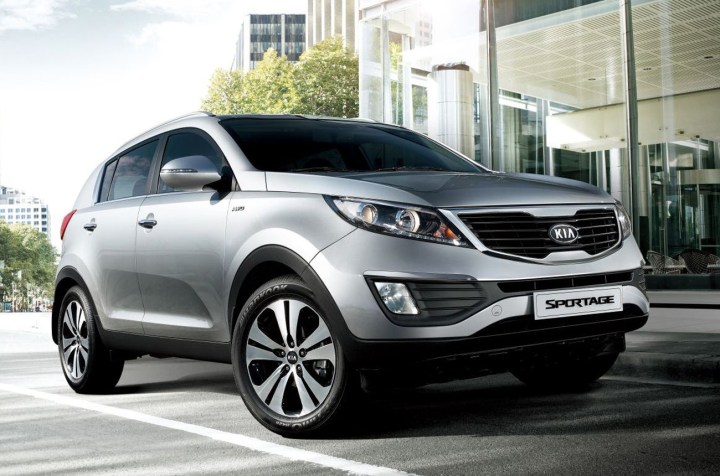
Korean automotive brand Kia’s strength has been its ability to offer well-specced vehicles at a value-added price. But desirable and aspirational aren’t terms usually associated with the marque – until recently, that is. The latest Kia Sorento is attracting attention - and orders. But the more compact Sportage may well change the perception of Kia forever. We travelled to Korea to drive it – and to find out more about what makes Kia tick
It’s just after 10pm in downtown Seoul, the 12 million strong capital of South Korea. From my eighth-floor room in the Grand InterContinental, I can see four lanes of bumper-to-bumper traffic stretching from east to west.
And across the road, an office block is still brightly lit, with scores of industrious workers toiling over their PCs. It seems this is a city that never sleeps.
Not that it’s a case of all work and no play. One block away from the hotel, a huge underground shopping mall is a colourful maze of shop fronts and restaurants. Many are still open at this hour and there are throngs of people everywhere.
I’m in Seoul as a guest of Kia Motors, which has brought a South African media contingent halfway around the world for the launch of the all-new Sportage compact SUV. I’ll get to drive that car tomorrow, but I’ve spent today at the massive Namyang Research and Development Centre which Kia shares with sister brand, Hyundai.
Tucked away between rice paddies and hydroponic tunnels, Namyang occupies 352ha (about the size of 500 football fields) and employs an amazing 10,000 engineers, most of whom are engaged in developing future Kia vehicles and technologies.
The sheer scale of Namyang is quite astonishing. It includes a huge proving ground, complete with a banked, 250km/h high-speed oval, skid pans, durability tracks and a range of simulated surfaces.

Photo: Kia Ceed Hybrid
Clustered around it are squat, square, contemporary buildings with thick walls, recessed one-way windows, and even thicker security doors. Inside, the Kias of tomorrow are being shaped and engineered.
The security is military-grade, and you don’t get through the gates without handing in cameras. Mobile phone camera lenses are blanked off with special stickers – and the same goes for your laptop computer’s webcam.
Once inside, you see lots of strange cars – some simply because they’re not available in SA. Others, because they’re disguised with elaborate canvas bibs and skirts.
“Some of those disguises are in place not to prevent outsiders from seeing them, but rather because Hyundai and Kia work completely independently here – and that means that neither side should get an early heads-up on the design direction the other may be adopting,” explains Kia global communication GM, Michael Choo.
That statement implies a more important fact, however; Hyundai and Kia may share platforms, systems and components to achieve critical economies of scale and amortise development costs. But at the same time, the two brands are working hard to create completely separate identities.
“Kia is positioning itself as a dynamic, youthful brand,” explains Choo, “while Hyundai’s approach focuses on contemporary styling and refinement, we continue to consider value as a core attribute, but we’ve added fun, excitement and dynamic response to our brand identity.”
However, fun is one element lacking from our driving experience at Namyang – and not because of the Kia cars we’re sampling. Lined up in what looks like a massive parking lot are several cars, most of which we haven’t seen before.
The most striking is the Kia K5 (badged Optima in some markets) – a mid-sized sedan with an almost futuristic appearance, thanks to bold, chiselled lines and an aggressive front end. Also in the line-up are a five-door Cerato hatch, and a hybrid C’eed, with runs on LPG, assisted by an electric motor.
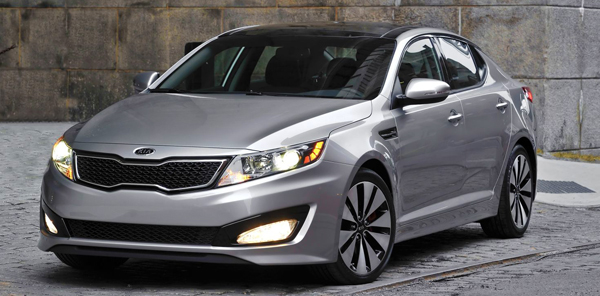
Photo: Kia Optima
So, some interesting machinery, but the drive takes less than a minute-and-a-half, and comprises a 400m blast to the end of the parking lot and back. Hardly enough to form anything, but the most fleeting of impressions.
As a further distraction, each of the cars has a minder in the passenger seat. As I pull away with a certain amount of gusto, the Korean cringes, then holds on for dear life … and that’s before we’ve even reached 60km/h.
Still, we’re fortunate for even this opportunity. In fact, the stares we attract tell me that outsiders – and especially foreigners – aren’t often seen at the facility.
Our abbreviated driving experience is followed by tours of the drivetrain development centre, where we’re shown an array of latest-generation proprietary engines and transmissions, now produced entirely in-house.
Particularly impressive is a 130kW common-rail 2,0-litre turbo-diesel, which is likely to be the star of the new Sportage. On the gearbox side, a compact six-speed automatic gearbox is the showpiece – also destined for the new SUV.
Fast forward to Day Two, and the basement of the Grand Intercontinental Hotel in downtown Seoul. A neatly parked row of brand new Kia Sportages awaits us as we traipse downstairs with more than a little trepidation.
My concerns aren’t centred around the handsome SUV, which looks bolder and more striking than any other vehicle in this class, bar none. No – it’s the thought of an encounter with Seoul’s snarling traffic that’s giving me sweaty palms.
As it turns out, the experience isn’t nearly as intimidating as I expected. I exit the basement and plunge into five lanes of cars, pick-ups, trucks, buses and vans. Immediately, I am in a turn-only lane, although the instructions dictate I continue on straight.
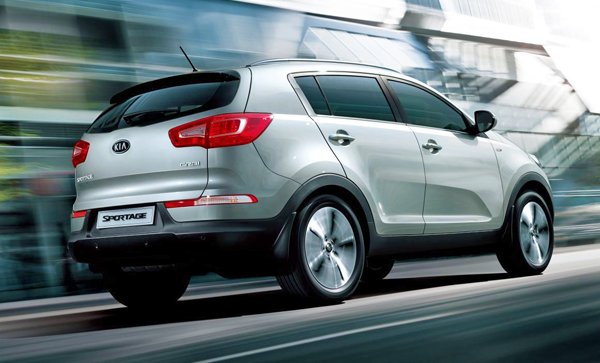
Photo: New Kia Sportage
I learn quickly: Don’t be tentative. Don’t be courteous. Don’t indicate your intentions. And definitely don’t wait for a gap to open. Just imagine that there is a gap – and swerve into it with determination. Somehow, miraculously, the driver of the car you seem set to smash into will back off just enough to let you in.
It takes us the best part of 45 minutes to wade through the thick Seoul traffic. We finally emerge on the newly-built Chuncheon highway, and once through the toll gate, we finally have some breathing space.
Not that there is any opportunity to drive particularly fast: the speed limit never exceeds 100km/h, and often drops to 80km/h. And the Koreans stick to those limits religiously. Speed cameras are located at frequent intervals, although they’re clearly signposted and generally painted bright yellow.
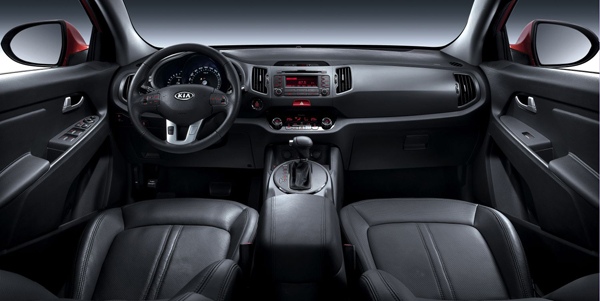
So, we head north-east towards our lunch stop at the Gangcheon Golf and Ski Resort at a fairly mundane pace. At least it gives me some respite from the hectic traffic to ponder the merits of the Sportage’s drivetrain.
The model I’m driving is powered by Kia’s Theta II-generation 2,0-litre 16-valve petrol engine, driving the front wheels via the new six-speed auto gearbox. The power plant is the baseline unit in a South African Sportage range that will also include a 2,4-litre petrol engine, and the R-series turbo-diesel I saw at the R&D centre.
With 122kW and 197Nm, the four-cylinder feels eager enough, but the gearbox is a disappointment. It lacks shift refinement and hunts between gears. There is a sequential manual shift mode, but the reaction times are tardy. The five-speed manual gearbox will surely be the better option.
Korean roads have a mostly unforgiving surface that often reminds me of our South African conditions – even the highway we’re on isn’t particularly smooth. But the Sportage isn’t fazed – it rides the bumps and dips with composed assurance, and despite the raised ride height, feels taut and controlled through corners.
If anything, the suspension fees stiffer than expected – almost more sports car than SUV. Which isn’t a bad thing when you’re winding your way through a mountain pass, but may compromise comfort on dodgy surfaces and gravel.
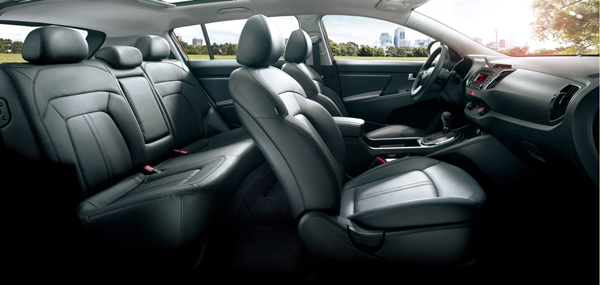
I suspect the 18-inch wheels are partly to blame. Shod with 235/55 Hankook tyres, they look great, but don’t provide enough give for the rougher stuff. Top Sportage models will get the same wheels in SA, but the 17-inchers on lower-spec versions may end up being a better choice.
Not that the Sportage is a serious off-roader. It’s more of an urban warrior, and the front-wheel drive versions are expected to outsell the all-wheel drive versions in SA because they’ll be more affordable to buy and cheaper to run.
The 177mm ground clearance isn’t exactly enough to tackle real off-road conditions, anyway. And the all-wheel drive version lacks low range, although it does come with traction control, hill-start control, and downhill braking control. It can also be locked to deliver a fixed 50:50 torque split between the front and rear axles at speeds below 40km/h.
Given that the majority of compact SUVs rarely see more off-roading than the smooth gravel of a game reserve, that’s probably more than sufficient.
One of the Sportage’s brightest aspects is its interior. This is where most owners will spend their time, and it’s spacious, well appointed and extremely comfortable. Best of all, it exudes an aura of premium quality that remains convincing, even under close scrutiny.
The finishes and materials are first class, with close attention to vital detail and an upmarket aura that compares well with the best. Standard equipment levels are comprehensive, although the exact specification for SA-bound models has yet to be finalised.
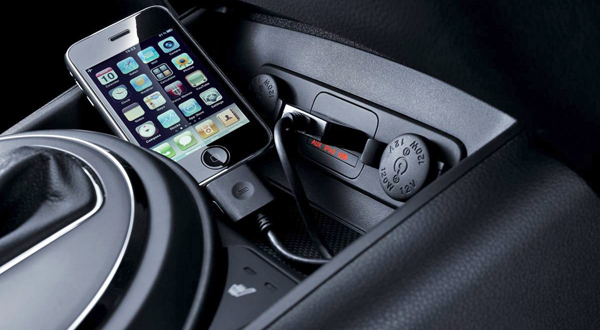
At the Gangcheon Golf and Ski Resort, the mercury has just passed 30degC and the humidity would make a Durbanite sweat. Ski resort? Yes – Korean winters are cold and wet enough for ample snow, and some 70% of the country is mountainous. In summer, the slopes become home to a splendid golf course.
It may be hot, but this is the first real opportunity to consider the Sportage’s styling in natural light. And the more I look at it, the more I like it.
Like the larger Sorento and the new Optima, the shape is the work of Peter Schreyer, the ex-Audi designer who now heads up the Kia design team. And his influence is obvious.
Narrow window apertures and a high waistline express aggression while creating a cosseting, secure cabin. Big wheels and pronounced wheel arches emphasise the Kia’s squat, planted stance. A broad C-pillar and muscular haunches add athletic flair. And then there is the front, with its bold brightwork and clearly expressed Kia identity.
The result is an extremely handsome compact SUV that turns heads. It’s a massive step forward from the current, dumpy, but competent Sportage. And it’s going to attract a lot more customers to Kia dealers than before.
That’s exactly what Kia is hoping to achieve. Demand for the larger Sorento, launched in SA late last year, is already outstripping supply to such an extent that the waiting period has grown to eight months. Sportage buyers may be faced with a similar problem when the car arrives in August.
But in the process, the perception of the Kia brand is changing dramatically. What was a small-volume marque with products hoping to attract buyers with budget price tags, has turned into a world-class car maker with ever-accelerating technological prowess and a range of desirable cars.
The Korean ugly duckling is starting to emerge as a globally appealing motoring swan – although Kia still has some way to grow. The ultimate proof will be the ability of its dealer networks to support the promise of its increasingly attractive products – and to create vital, long-term brand loyalty in the process.
By Deon Schoeman
[email protected]
Main photo: New Kia Sportage
VITAL STATISTICS
Kia Sportage 2.0 AT
Engine
In-line four-cylinder, 1 998 cc
Gearbox
Six-speed auto
Power
122 kW @ 6 200 rpm
Torque
197 Nm @ 4 600 rpm
0-100 km/h
10,6 sec
Top speed
182 km/h
Fuel consumption
8,7 l/100 km (combined cycle)
Carbon dioxide emissions
207 g/km
Retail price
TBA

















 Become an Insider
Become an Insider